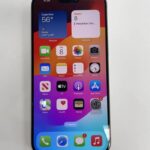When choosing an iPhone, size is a key factor for many users. Apple’s lineup includes various models, but the one that stands tallest in screen size is the iPhone 14 Pro Max and its sibling, the iPhone 14 Plus, both sporting a 6.7-inch OLED display. Though the iPhone 8 Plus has a larger body due to its design with a home button and sizable bezels, newer models boast more screen real estate in a more compact frame.
With each new release, Apple aims to enhance the user’s experience by improving the design and display. Larger screens have become a mainstay for those seeking a vast canvas for multimedia, gaming, or productivity tasks, and Apple delivers this without compromising on the sophisticated build and high-resolution displays that characterize their devices.
Performance and camera capabilities are also paramount in the biggest iPhones. They house powerful processors and advanced camera systems, enabling users to capture high-quality photos and videos while ensuring that the device can handle demanding applications effortlessly.
What iPhone Is the Biggest? (2026 Edition)
🏆 1. iPhone 17 Pro Max — The Biggest iPhone You Can Buy Right Now
- Display: 6.9 inches (Super Retina XDR OLED)
- Dimensions: ~160.8 x 77.8 x 7.9 mm
- Weight: Around 225 grams
- Key Features:
- Titanium frame (lighter than stainless steel)
- A19 Pro chip for top-tier performance
- Improved 5x tetraprism zoom camera
- Best battery life in the iPhone lineup
✅ Why it’s the biggest:
The iPhone 17 Pro Max remains Apple’s largest and most premium model in 2025, offering the biggest display, largest battery, and most advanced camera system.
🔮 2. iPhone 18 Pro Max (Coming Fall 2026)
According to early reports and leaks (Macworld, PhoneArena), the iPhone 18 Pro Max will continue to be Apple’s biggest phone — and possibly even slightly larger than the 17 Pro Max.
- Expected Display: 6.9–7.0 inches (borderless design may make it appear bigger)
- Rumored Features:
- Slimmer bezels and possibly a “bezel-less” look
- Next-gen A20 Pro chip
- Improved periscope zoom lens and AI photography
- Potentially new “AI-enhanced” iOS 20 features
- Same titanium build, but lighter
💡 Interesting rumor: Apple may introduce a subtle design refresh, with a thinner frame and new “Graphite Blue” finish for the Pro models.
📏 3. Other iPhone 17 & 18 Models (for Comparison)
| Model | Display Size | Notes |
|---|---|---|
| iPhone 17 mini (if released) | 5.8″ | Compact, limited availability |
| iPhone 17 / 18 | 6.1″ | Standard flagship size |
| iPhone 17 Plus / 18 Plus | 6.7″ | Large screen but fewer Pro features |
| iPhone 17 Pro / 18 Pro | 6.3″ | Premium features in a smaller body |
| iPhone 17 Pro Max / 18 Pro Max | 6.9″ | The biggest and most advanced |
🧠 What About Foldables?
Apple is rumored to be developing a foldable iPhone (“iPhone Fold”), possibly debuting in 2026 or 2027 (Tom’s Guide).
If released, it could surpass the Pro Max in total unfolded screen size, potentially offering 8 inches of display space — but this model is still unconfirmed.
🏁 Bottom Line
- Biggest iPhone in 2025: iPhone 17 Pro Max (6.9″)
- Expected Biggest iPhone in 2026: iPhone 18 Pro Max (≈7.0″)
- Possible Future Contender: iPhone Fold (≈8″ unfolded)
If you want the largest screen and best performance today, go for the iPhone 17 Pro Max.
If you can wait until fall 2026, the iPhone 18 Pro Max is expected to push the limits even further — with a bigger, sleeker, and smarter design.
Key Takeaways
- The iPhone 14 Pro Max and iPhone 14 Plus are the biggest in screen size with 6.7-inch displays.
- Larger iPhones offer enhanced experiences in multimedia and productivity with improved design.
- These devices also bring top performance and camera systems for high-quality content creation.
Design and Display
When considering the biggest iPhone, design and display features such as size, technology, and durability are key elements. The largest iPhone to date stands out with its sizeable OLED screen and robust build.
Physical Dimensions and Screen Size
The iPhone model with the biggest screen is the iPhone 13 Pro Max, boasting a 6.7-inch Super Retina XDR display. It outstrips its peers in screen size, providing more space for viewing content and a larger canvas for apps. The device’s OLED technology enhances this experience with crisp, bright visuals that make images and videos pop.
- iPhone 13 Pro Max: 6.7-inch display
Display Technology
The iPhone 13 Pro Max features an OLED screen known as the Super Retina XDR display. This technology offers a wide range of colors, deep blacks, and high brightness levels, making for a true-to-life viewing experience. The Super Retina XDR display combines with Ceramic Shield for durability and water resistance, protecting the device from spills and drops. These features together create a resilient and visually stunning phone.
- Super Retina XDR: Enhanced color and brightness
- Ceramic Shield: Increased durability
- Water Resistance: Protection against spills
Performance and Camera
In this section, we focus on how the power under the hood enhances the iPhone’s ability to capture stunning images with ease and supports extended use between charges.
Processor and RAM
Latest iPhones feature the A15 Bionic chip, which delivers fast performance for everyday tasks and graphic-heavy applications. Paired with ample RAM, it equips these devices for smooth multitasking and responsive gaming.
Camera Specifications
The camera system on flagship iPhones generally includes a telephoto, wide, and ultra wide camera. Each camera serves a unique function, from the ultra wide’s broad capture area to the telephoto’s zoom capabilities. The Pro models often come with advanced features like a Lidar sensor for improved depth mapping and Night mode for low-light photography. Sensor-shift optical image stabilization helps in keeping shots steady and clear.
Battery and Longevity
Flagship iPhone models boast long battery life, often claiming the ‘longest battery life’ in an iPhone to date. This extended usability is due to efficient processors and larger batteries. They support both 5G and 4G LTE, which can impact battery duration depending on network usage.







